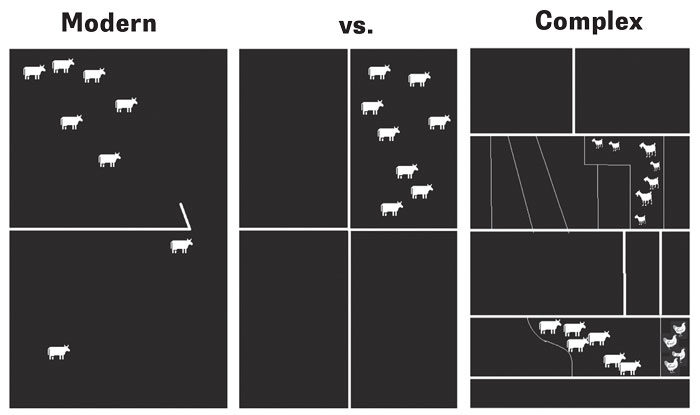No-Till Farmer
Get full access NOW to the most comprehensive, powerful and easy-to-use online resource for no-tillage practices. Just one good idea will pay for your subscription hundreds of times over.

ADDING COMPLEXITY. The modern model of grazing is large pastures, says Noble Research Institute’s Steve Swaffar, but the goal for the organization’s ranches is to move toward a greater level of complexity. “Surprisingly, it's actually less management for 2 species than 1.” Image: Steve Swaffar
On the Noble Research Institute’s research ranches and pastures, which cover 14,000 acres across southern Oklahoma, visitors might be surprised to see sheep and goats mingling with cattle on pastureland
It’s an unlikely sight on land that could otherwise pass for a conventional ranching operation. When sheep and goats were brought in 2 years ago, ranching staff didn’t think it was going to work, says Steve Swaffar, an ag consultant with the Noble Research Institute.
“Our ranch staff said, ‘We are not sure you can do this. We will struggle to manage these animals all at once,” Swaffar says. “Surprisingly, they can, and surprisingly, it’s actually less management for 2 species than 1.”
Experimentation to find new ways of promoting soil health is a guiding principle on Noble ranches. The organization was founded in 1945 by businessman Lloyd Noble with research, soil testing and consultation as its three main objectives. In 2020, under new management, it put a new focus on regenerative land management.
The key components of adaptive grazing are timing, duration, frequency and density. The Noble Research Institute uses 3 species of livestock, multiple paddock sizes, higher stock densities, increased forage rest and grazing at different times of year.
“We’re going to be working for the producer to provide them with improved soil health in their grazing systems and lasting producer profitability,” Swaffar says.
By 2040, in collaboration with others, the organization’s goal is to show farmers and ranchers how to achieve measurable regeneration…